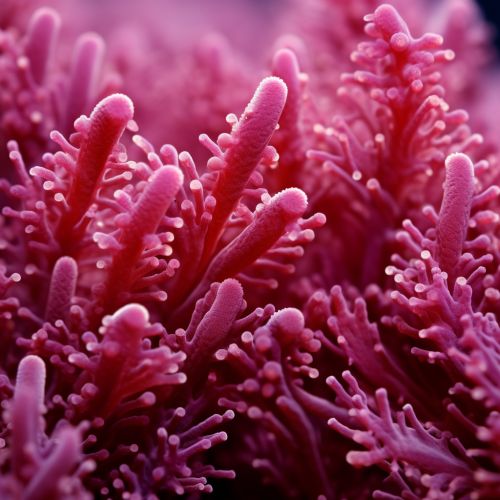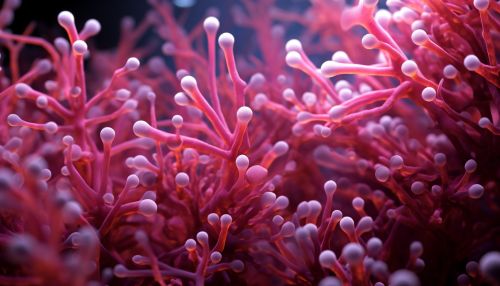Rhodospirillaceae
Overview
The Rhodospirillaceae are a family of Proteobacteria. They are purple non-sulfur bacteria, capable of both photosynthesis and chemosynthesis. This family of bacteria is known for its unique metabolic diversity and its ability to adapt to a variety of environmental conditions.


Taxonomy
Rhodospirillaceae belongs to the class Alphaproteobacteria, order Rhodospirillales. The family currently comprises of several genera including Rhodospirillum, Azospirillum, Rhodocista, and Skermanella among others. The taxonomy of this family is subject to ongoing research and revisions due to the advancements in molecular biology and genomics.
Morphology
Members of the Rhodospirillaceae family are generally rod-shaped or spiral-shaped, hence the name Rhodospirillum which translates to "red spiral". They possess a unique internal structure known as intracytoplasmic membrane which houses the photosynthetic pigments. These pigments give them their characteristic purple color.
Metabolism
Rhodospirillaceae are metabolically diverse, capable of both photosynthesis and chemosynthesis. They are facultative anaerobes, meaning they can grow in both the presence and absence of oxygen. When oxygen is absent, they can perform anaerobic respiration using nitrate or sulfate as an electron acceptor. During photosynthesis, they use organic compounds as a source of electrons, unlike green sulfur bacteria that use hydrogen sulfide.
Ecological Role
Rhodospirillaceae play a significant role in various ecological processes. They are involved in the nitrogen cycle, particularly in the process of nitrogen fixation. Some species like Azospirillum are known to promote plant growth and are used in agriculture as biofertilizers. They also play a role in the degradation of pollutants, contributing to bioremediation efforts.
Genomics
The genomics of Rhodospirillaceae is a rapidly expanding field. The genomes of several species have been sequenced, providing insights into their metabolic capabilities, ecological roles, and evolutionary history. Genomic studies have also aided in the identification and classification of new species within this family.
Research and Applications
Rhodospirillaceae have been the subject of numerous research studies due to their unique metabolic capabilities and potential applications. They are being explored for their potential use in bioremediation, biofertilization, and in the production of biofuels. Their ability to perform photosynthesis using organic compounds has also sparked interest in their potential use in the development of new photosynthetic models.
